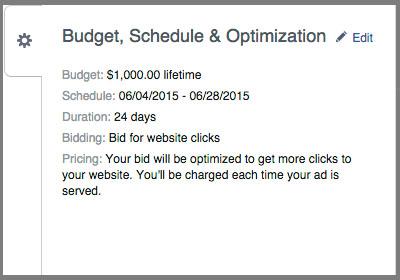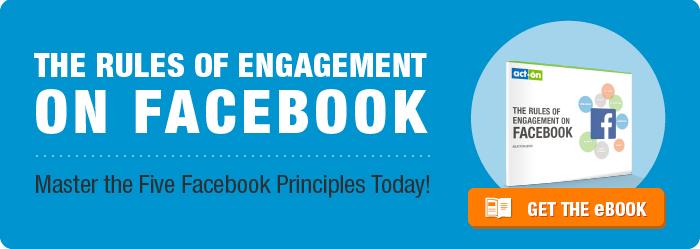This blog post was originally posted on GoChime as “6 Things You’re Doing Wrong with Facebook Ads.” We liked it so much we wanted to share it with you, so here it is, thanks to Brian Falk.
There’s a lot of uncertainty around Facebook ads. As a Facebook API partner and member of the Facebook  Ads community, we talk to companies all the time who are either afraid to dip their toes into the space, or are using the wrong approach and not getting the results they want.
Ads community, we talk to companies all the time who are either afraid to dip their toes into the space, or are using the wrong approach and not getting the results they want.
Since advertising on Facebook is a relatively new channel with a plethora of options available it can be a daunting task to get started. That’s why we’ve gone back and dug up the most common mistakes companies make when first starting out. So without further adieu, here are the 6 things you’re doing wrong when running Facebook Ads.
1. Relevant content
This is the #1 factor in having successful ads on Facebook. Simply put, make sure your content is relevant for the audience you’re advertising to. Facebook has what they call a “relevance score” which they use to gauge the reaction of your ad with your audience (you can read more about it here). The higher your relevance score, the less you’re going to pay.
Are people liking, sharing or commenting on your ad? Great! This will drive up your score. Are people clicking that arrow of shame in the upper right and requesting to hide your ad? You might want to go back to the drawing board.
2. Budget
 “How much should I spend?” This is by far the most common question we get. There’s no hard and fast answer, since it will depend on the reach you want and how much money you have available to spend, but as a ballpark we recommend spending $20 for every 1000 people you are trying to reach.
“How much should I spend?” This is by far the most common question we get. There’s no hard and fast answer, since it will depend on the reach you want and how much money you have available to spend, but as a ballpark we recommend spending $20 for every 1000 people you are trying to reach.
3. Bidding
Facebook’s platform gives you a few different options for bidding. The simplest are CPC (cost per click) and CPM (cost per 1000 impressions). When you bid on CPC, a “click” includes likes, comments and shares so delivery will be optimized based on people most likely to click your ad.
There is another, more advanced bidding option called “oCPM” (optimized CPM). In this case you are bidding for impressions on a user’s screen, but Facebook is optimizing delivery for people who are most likely to convert for your selected goal. We find that most companies are directing people to their external site to have them do something (like sign up or purchase) and in this case, oCPM is the way to go. Bonus points if you put in a tracking pixel so you can get detailed conversion metrics linking users who saw your ad with those hanging out on your site. If you’re looking for more details, here is a good breakdown of the different bid types.
So bottom line: if you’re using Facebook ads to direct people to your site, use oCPM.
4. Placement
Right rail? Newsfeed? Mobile newsfeed? Right rail started it all, but placing an ad in the top corner of the screen where nobody looks doesn’t feel like a good strategy. Personally, I would put it in front of users where they spend most of their time and their engagement is highest – on mobile.
By running a mobile newsfeed ad, you can grab the attention of some of the 750 million users using their mobile app on any given day. Done the right way, you can tastefully insert your message into their mobile feed and virtually guarantee they see your message. Plus, since the screen real estate on mobile devices tends to be limited, you’ll briefly have their full attention.
While we heartily recommend mobile newsfeed ads, it’s important to keep in mind that if your goal is to get users to click through to your site, it should be mobile optimized for a good experience on the phone. Otherwise you could see frustrated users trying to make sense of your site on their small screens.
5. Audience
Keep the audience relevant! As mentioned previously, it literally pays to keep your ad relevant. If that relevance score is high you’ll be dishing out less dough for impressions. And one aspect of this is making sure you choose the right audience for your ad.
 Facebook has very detailed targeting options, which can be very powerful as long as you don’t shoot yourself in the foot (hint: if you have a sale on water balloons, you probably don’t want to target adults over 60 living in Siberia).
Facebook has very detailed targeting options, which can be very powerful as long as you don’t shoot yourself in the foot (hint: if you have a sale on water balloons, you probably don’t want to target adults over 60 living in Siberia).
Early on, Facebook realized that sometimes the most relevant audience is made up of your existing customers or users (people who have purchased from you, signed up for your newsletter, or downloaded the latest white paper). Before long they created a special targeting option called a Custom Audience. A custom audience is just that – you send your email addresses to Facebook and they build the audience based on those specific users. How can you get more relevant that that?
6. Lookalikes
One of the lesser-known gems of Facebook ads is the lookalike feature. If your goal is to find new users, you can create a custom audience by uploading email addresses then tell Facebook to go and find users similar to them. By uploading a list as small as 1000 emails you can create an audience of over 1MM prospective users. And these users are in some way similar to your existing customers – a great way to increase the signups or purchases.
7. Is there anything we missed?
Have you spent time running Facebook ads? What have you done right? What have you struggled with and learned from? We’re curious about your experience!
Want to get the most mileage out of Facebook? Then you need to know the rules of the road. Our eBook, The Rules of Engagement on Facebook, gives you a thorough understanding of Facebook principles and the Terms of Service that apply to content and behavior. These rules apply to your own custom apps as well as the third-party apps we all use for photo and share-to-win contests, trivia, quizzes, polls and more, so you can make your content more sharable and searchable, and avoid violating the terms of service.

